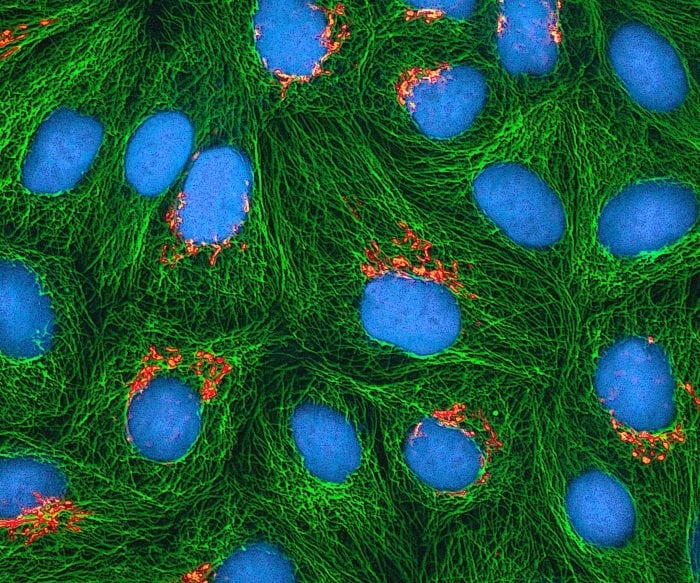
Accurate visualization is critical for cancer surgery. A large portion of the Oncologic surgeon’s task is distinguishing normal tissue from cancer. The goal is to remove all of the tumor while minimizing damage to normal tissue.
To accomplish this, researchers have attempted to target tumor-specific markers with contrast agents such as fluorescent dyes to allow tumor cells to “light up” compared to normal cells. Tumor-specific markers, however, can vary in concentration across different tumors of the same type and are almost never found in all cancers.
In addition, many targeted proteins and markers are also found in normal tissue making the increased fluorescence in tumors a matter of degree; many strategies can illuminate tumors but the background tissues can also fluoresce. This takes one patent recognition problem the surgeon faces under normal lighting conditions and simply replaces it with another; trying to recognize and interpret fluorescent signals. Most significantly it does not provide the surgeon new unique information.
One strategy to overcome the complex oncogenotypes and histologic phenotypes of cancer is to target metabolic vulnerabilities that are more ubiquitous. Aerobic glycolysis (aka Warburg effect, where cancer cells preferentially take up glucose and convert it into lactic acid, has rekindled intense interest in academia and industry.
In the tumor microenvironment, lactic acid is preferentially accumulated in the extracellular space due to monocarboxylate transporters, which are elevated in cancer cell membranes. The resulting acidification of extracellular pH (pHe) in tumors promotes remodeling of extracellular matrix for increased tumor invasion and metastasis. Recently, Barber and coworkers described dysregulated pH in tumors as another “hallmark of cancer”.
Our research has developed pH sensitive nanoprobes that can respond to the acidic tumor microenvironment. The critical feature of these nanoprobes is that they work like an electronic transistor which is essentially an on/off switch. They respond to tumor acidity in a binary manner displaying no intermediate levels of fluorescence
Requiring interpretation; they are completely dark in normal tissue and completely fluorescent in cancer. This critical feature is unique and has never been demonstrated for any other therapeutic or imaging agent. This is the first and only example of an injectable agent that takes a biologic signal such as pH and converts it into a binary output of dark and light. Put simply this is digitization (turning into discrete values) of an analog (continuously variable) signal; the tumor pH.
See these papers for more information:
- A Transistor-like pH Nanoprobe for Tumour Detection and Image-guided Surgery. Zhao T, et al. Nat Biomed Eng. 2016;1. pii: 0006. doi: 10.1038/s41551-016-0006. Epub 2016 Dec 19.
- Optical molecular imaging for tumor detection and image-guided surgery. Wang C, et al. Biomaterials. 2018 Mar;157:62-75. doi: 10.1016/j.biomaterials.2017.12.002. Epub 2017 Dec 5.
These findings are described in the article entitled Treatment Deintensification for Human Papillomavirus-Associated Oropharyngeal Cancer, published in the journal Annals of Surgical Oncology. This work was led by Baran D. Sumer from the University of Texas Southwestern Medical Center.









